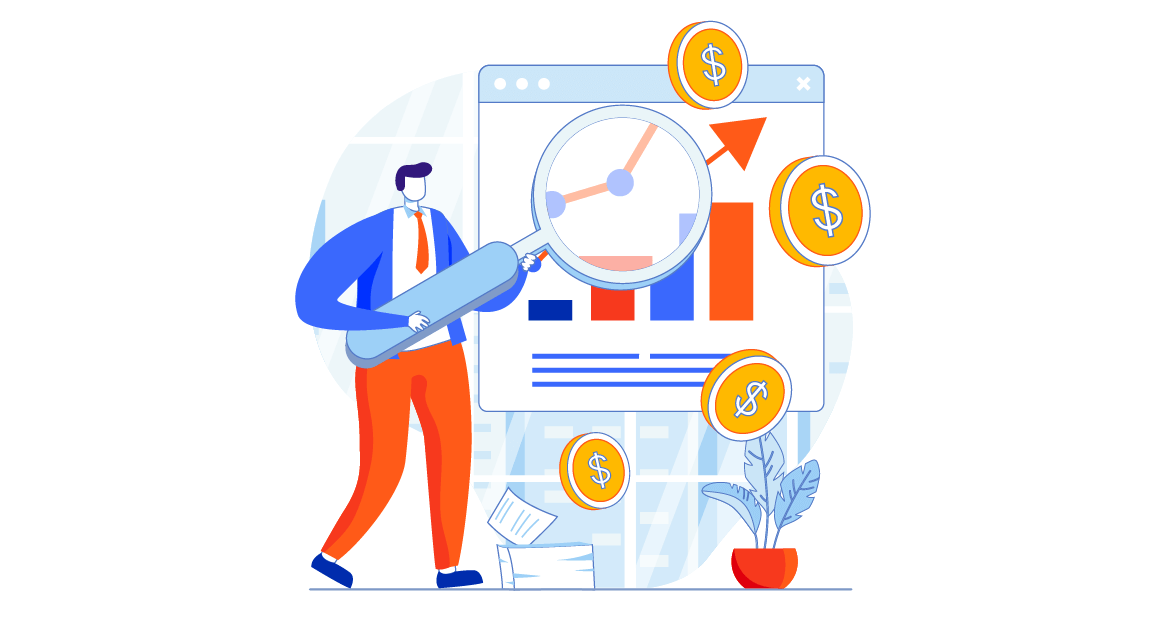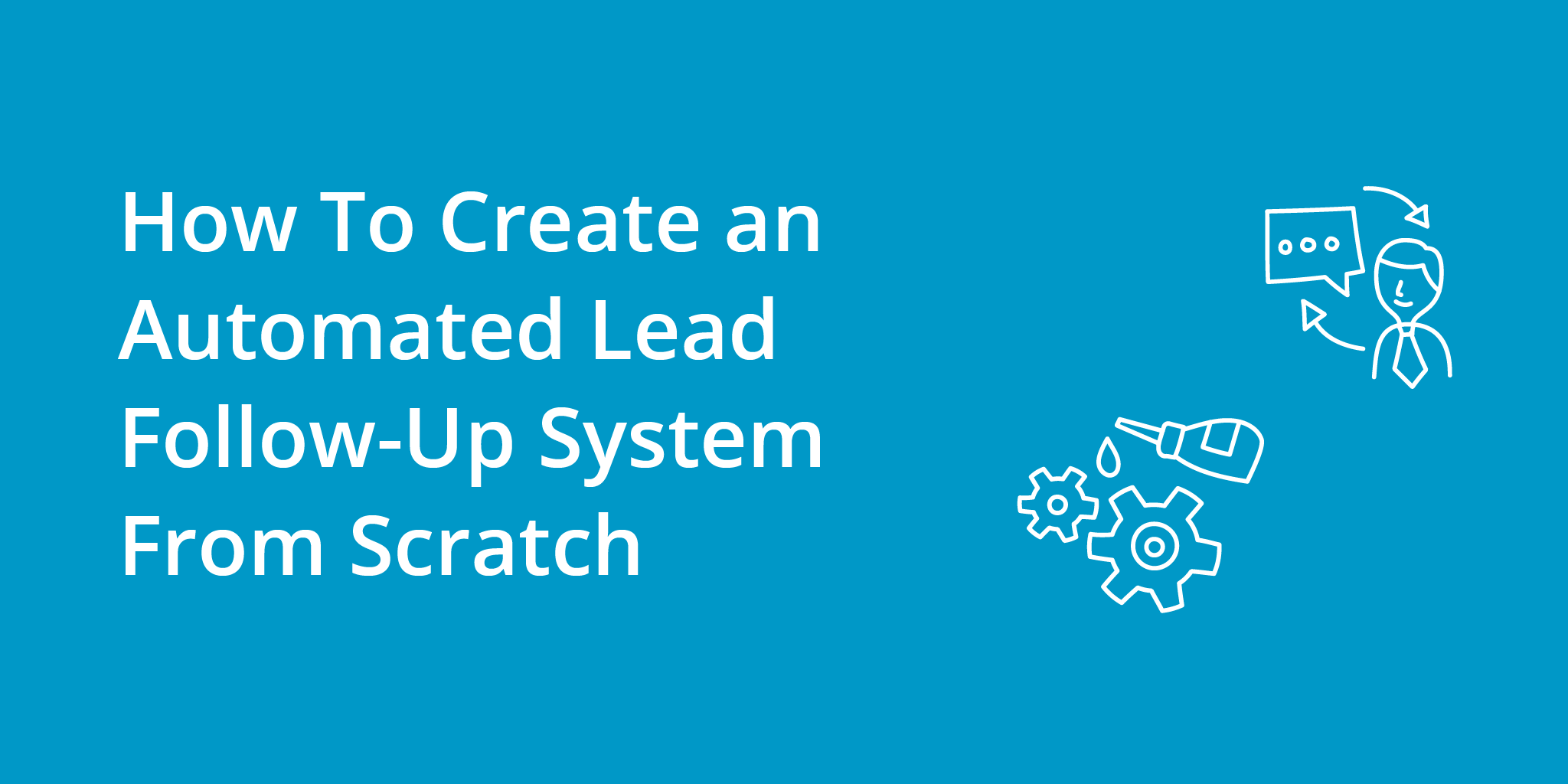Lead follow-up is an essential part of any B2B sales process. However, manual lead follow-up can be time-consuming and inefficient, which is why businesses are turning to automated systems to streamline the process. In this article, we’ll outline a step-by-step guide to help you create an automated lead follow-up system from scratch.
- Define the Lead Follow-Up Process
- Assess Your Current Process
- Build an Automated Lead Follow-Up System
- Implementing Your Sales Automation System

Define the Lead Follow-Up Process
Before building an automated system, it’s essential to understand the stages of a typical lead follow-up process. With an automated lead follow-up system, each stage is streamlined via partial or full automation, and the process becomes more efficient. Here are the key stages:
- Lead Capture: The lead’s contact information is captured through a form, landing page, or other means.
- Lead Qualification: The lead is assessed, usually by a marketing team, to determine if they meet your ideal customer profile.
- Initial Follow-up: The lead is contacted by phone or email to establish communication, generally by the sales team.
- Nurturing: The lead is provided with relevant information and resources to build trust and maintain engagement.
- Conversion: The lead is converted into a customer through a sale or other desired action.
Assess Your Current Process
To create an effective automated lead follow-up system, it’s crucial to evaluate your current lead follow-up process. By analyzing your current process, you can identify gaps and inefficiencies that an automated system can help fill.
By asking yourself specific questions, such as how leads are currently being captured and qualified, you can determine where your current process can be improved. Here are some more questions to help you assess your process:
- How are leads currently being captured and qualified?
- What methods are used for initial follow-up?
- What resources and communication channels are used for lead nurturing?
- How is lead conversion currently achieved?
- What are the current response rates and conversion rates?
While it can be difficult to know what aspects of your sales process can be automated, identifying places where you can improve is a good place to start. Once you have this information, you can begin to search for solutions that fix your specific gaps.
Build an Automated Lead Follow-Up System
Now that you have a clear understanding of your current process, it’s time to build an automated system. Here are the key components of the sales process that can be automated with existing software:
- Lead Capture: Use online forms or landing pages to capture leads’ contact information and automatically add them to your database. For example, if you use HubSpot CRM, you can create landing pages through HubSpot so that new lead information is immediately available in your CRM.
- Lead Qualification: You can use lead scoring software to automatically determine if leads meet your ideal customer profile. Plus, you can include qualification questions in your lead form (such as company size, industry, etc.) to speed up the vetting process.
- Initial Follow-up: Use an email, phone or SMS campaign to automatically contact new leads. For instance, with Kixie’s speed to lead technology, you can contact a new inbound lead in seconds with a templated SMS.
- Nurturing: You can set up a sequence of automated emails, educational content, and targeted offers to build trust and maintain engagement with leads using email automation software. Then, you can add onto this nurturing sequence with Kixie and schedule follow-up phone calls and SMS messages.
Do CRM Systems Automatically Follow Up With Leads?
The short answer is yes! Most CRM systems come with some degree of built-in automation capabilities. For example, HubSpot CRM comes with workflows that you can customize in order to automate your lead follow-up.
Once you set up a lead follow-up workflow, you can essentially “set it and forget it” while the automation does its work! However, we always recommend using a combination of automation and human outreach to ensure that your follow-up is as effective as possible.

Implementing Your Sales Automation System
After building your automated lead follow-up system, it’s crucial to implement it effectively to see the best results. The implementation process includes choosing an automated lead follow-up tool, creating a workflow, configuring your automation, integrating it with your sales team, and testing and refining your system continually. Here is a step-by-step guide for implementing an automated lead follow-up system:
- Choose an Automated Lead Follow-Up Tool: Create a tech stack that allows you to automate your lead follow-up process. We’ve already done the work and compiled the best tech stack for sales automation for you!
- Create Your Workflow: Define the stages of your lead follow-up process and create a workflow that automates each step. With Kixie and HubSpot, you can send automated text messages to your prospects as they open your email, follow-up at a scheduled time via phone, and much more! Head over to our YouTube page for even more automation tutorials.
- Configure Your Automation: Use your chosen tool or platform to set up your automation rules and triggers. You may want to use a tool like Zapier to be able to sync your systems together. When choosing new software, keep an eye out for systems that already integrate with your CRM for easier setup and reporting.
- Integrate with Your Sales Team: Ensure your automated system integrates with your sales team’s workflow, so they are notified when hot leads are ready for follow-up. Sales engagement platforms, like Kixie, can help you create a workflow with your sales team in mind.
- Test and Refine: Monitor your automated system’s performance and refine your workflows to improve response rates and conversion rates continually. Keep important sales KPIs in mind as you refine and monitor your automations.
Final Thoughts
An automated lead follow-up system is an excellent way to streamline your sales process, improve efficiency, and increase conversion rates. By following the steps outlined in this article, you can create an effective automated system from scratch that helps you close more deals and grow your business. By defining your process, assessing your current system, building your system, implementing it effectively, and continually refining it, you can create an automated lead follow-up system that sets you apart from the competition. Good luck!



